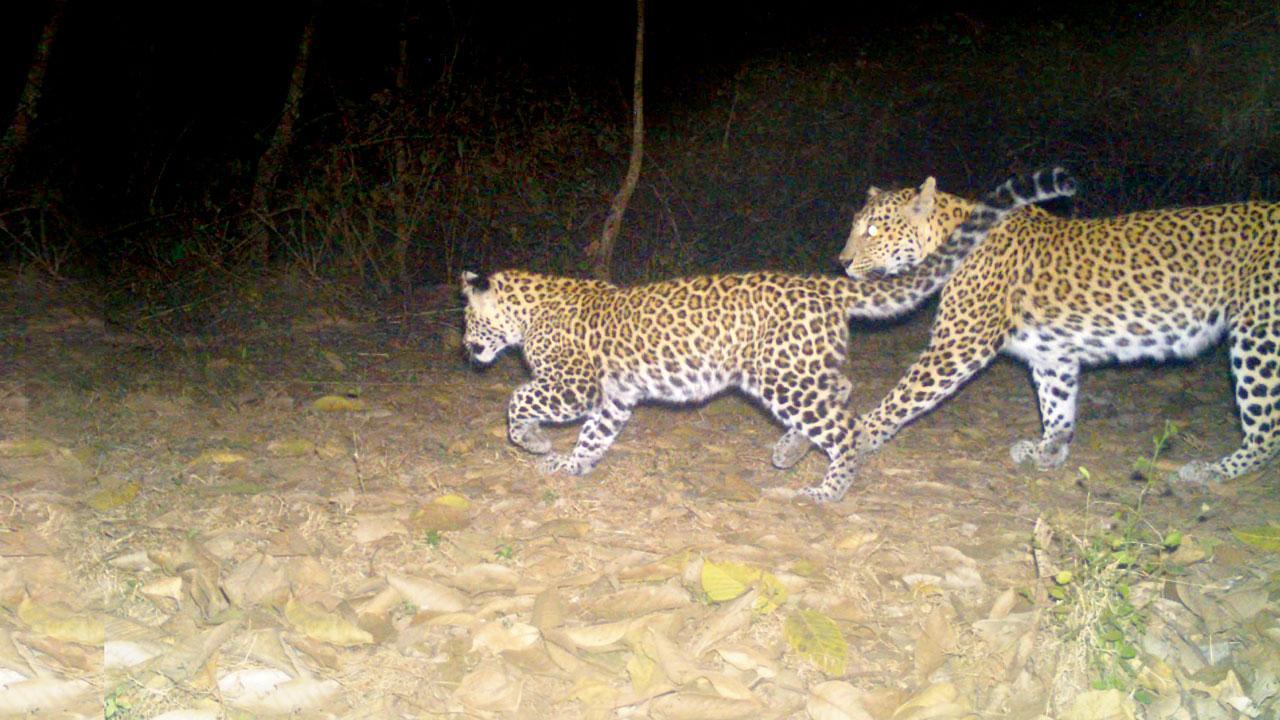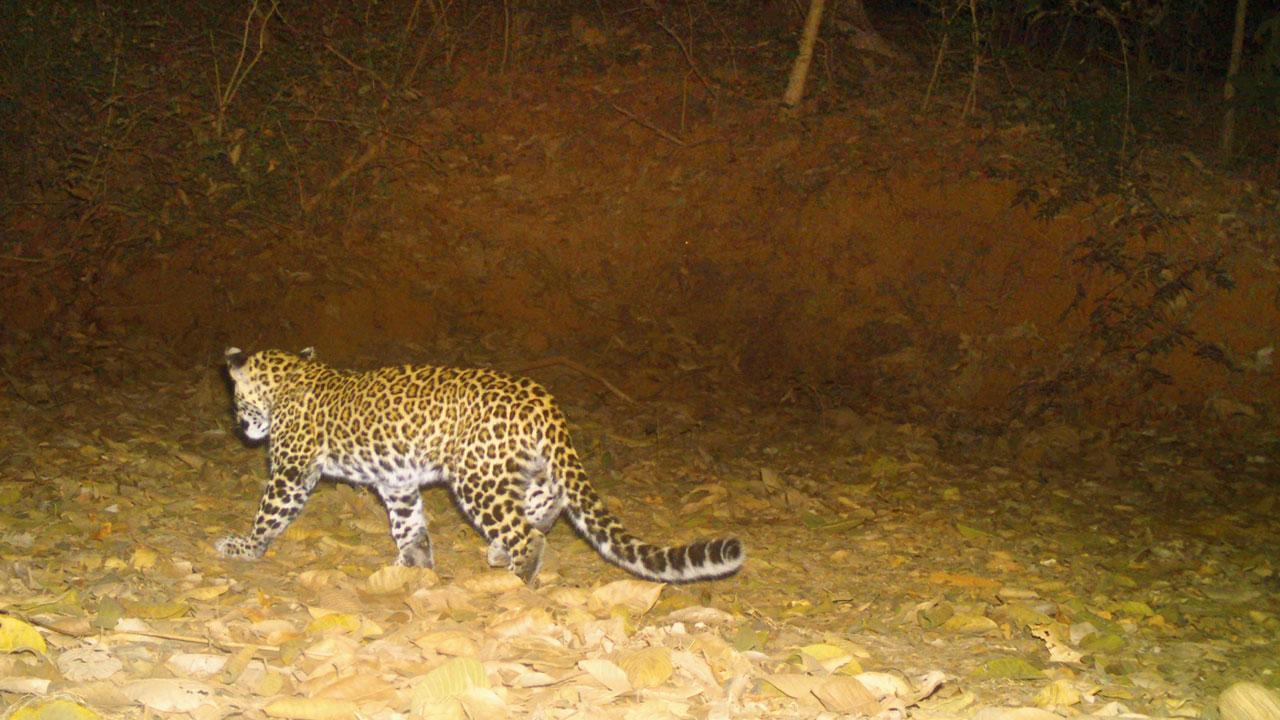Forest officials say big cat that was found dead on tracks in April may not only have crossed Ghodbunder Road but also swam across the creek separating SGNP from the Nagla jungle

C45 and his mother L27 at Sanjay Gandhi National Park. Pic/Nikit Surve/WCS-India/SGNP
The leopard from Sanjay Gandhi National Park (SGNP) that died on the railway tracks near Kaman, close to Vasai, on April 21, had ventured beyond Ghodbunder Road and swum across Vasai creek, which has been witnessed only twice earlier.
After its demise, researchers at SGNP discovered that the leopard was C45, a big cat that had been photographed by a camera trap near Vihar lake at the national park in January last year. According to forest department officials, the leopard may have not only crossed Ghodbunder Road, but also swum across the wide creek separating SGNP from the Nagla jungle.
ADVERTISEMENT

C45 near Vihar lake in Sanjay Gandhi National Park on January 20, 2022. Pic/Nikit Surve/WCS-India/SGNP
Conservator of Forest and SGNP Director G Mallikarjun told mid-day that the leopard was first photographed on January 20, 2022. The researchers could only get one image of the animal as it was never photographed again by any of the cameras installed at SGNP.
The leopard was about three years and it was born to a SGNP leopardess, L27. It had two siblings. C45 died while trying to cross the Vasai Road-Diva-Panvel railway tracks near Kaman railway station between 3 am and 4 am. According to SGNP officials, the site of his death was the forest limits of Sarjamori survey No. 66, Parimandal Nagla, Niyatshetra Sarjamori survey No. 2023.
When the researchers tried to match the rosette pattern of the leopard with that of other big cats in the SGNP database, they were surprised to learn that it had been identified as C45. This highlights the importance of wildlife corridors. Additional Principal Chief Conservator of Forest (APCCF) Dr V Clement Ben said, “SGNP has a population of more than 45 leopards and the young male leopards in search of new territories will disperse.
Wildlife corridors and continuous forest connectivity are definitely some of the most critical factors for the long-term survival of large carnivores. In India, we already have documented evidence of how important corridors are for the conservation of large carnivores and other large-bodied herbivores like elephants, etc. From the point of the management, the focus of the forest department will be to make sure that the wildlife corridors remain intact without any disturbance.” C45 was the third leopard to cross Ghodbunder Road and Vasai creek after the legendry radio-collared leopard Ajoba and another leopard that had died on the Chinchoti-Bhiwandi highway many years ago.
Biologist Nikit Surve from Wildlife Conservation Society-India, who has been studying leopards in SGNP and Tungareshwar Wildlife Sanctuary, said, “The only habitat connectivity which SGNP has is in the northern direction. Aarey Milk Colony located on the southern side acts as a buffer to the protected area. There is no connectivity to any forest patches beyond Aarey Milk Colony towards the south. In such a case, the corridor connectivity in the northern part becomes crucial for SGNP and its wild animals. C45 was the third leopard that was documented to have crossed the Vasai creek and linear barriers like the Thane-Ghodbunder Road.”
April 21
Day the leopard died
45
Minimum no of leopards at SGNP
 Subscribe today by clicking the link and stay updated with the latest news!" Click here!
Subscribe today by clicking the link and stay updated with the latest news!" Click here!








